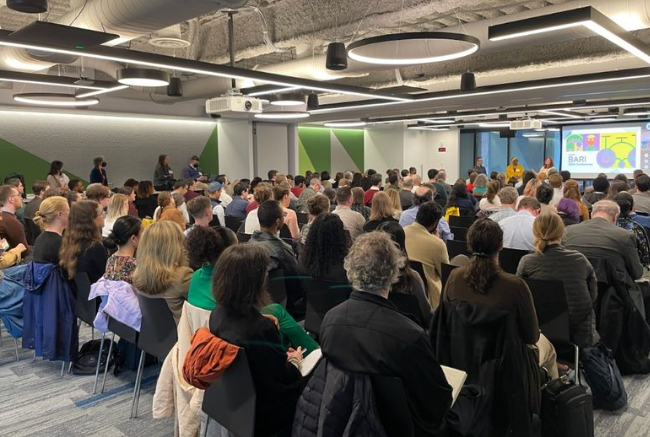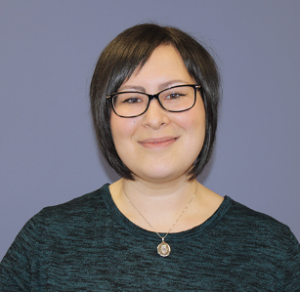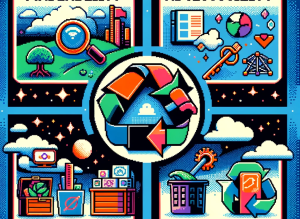
A conversation with Kim Lucas
We were very excited to hear from a research-practitioner-designer whom I’ve admired since I first saw their work in late 2019.
Dr. Kim Lucas is a dynamic academic-practitioner dedicated to fostering community-driven civic research and advancing city-university collaborations. With a deep commitment to leveraging collective expertise for social good, Kim has played pivotal roles in various impactful projects and initiatives. As a former Interim Executive Director at Metrolab Network and Director of Civic Research for the City of Boston, Kim’s work has consistently bridged the gap between academia and practice, particularly in the realm of early childhood policy and the childcare market.
Kim’s extensive experience spans over a decade of innovation in community-engaged research, including leadership roles at Northeastern University and the Boston Area Research Initiative. Their research and practical efforts have focused on early childhood education, workforce development, and civic engagement, underscoring a career marked by meaningful contributions to public policy and economic justice.
Currently, as a Consultant with the Urban Institute and Community Labor United, Kim continues to influence the landscape of family engagement systems and workforce development through thorough evaluations and policy analysis. Their work exemplifies a commitment to praxis—applying theoretical insights to real-world challenges—on both local and national scales, driving progress in civic resilience, childcare, and early education.
And, I’m breaking news (since we did this interview): Kim was appointed to Massachusetts’ Early Education and Care Board by Governor Maura Healey.
Whether leading large-scale projects or collaborating on community-driven initiatives, Kim’s approach is rooted in a deep understanding of the social fabric and a passion for creating sustainable, positive change.
Kim recently co-authored an article on civic research with Daniel T. O’Brien in the Harvard Data Science Review. We explored some of the deeper implications of their work.
How might the principles of civic research be applied to public and community health initiatives?

It’s important to recognize that the term ‘civic’ in ‘civic research’ is crucial. We aim for things to be research- or evidence-based and data-driven. However, we also acknowledge that research often happens outside of academia. Evidence largely comes from doing, not just theorizing. We understand that data comes in various forms—it can be hard numbers, survey results, or counts. But it can also be experiences, stories, and observations from day-to-day life.
It takes a diverse group of people with various skill sets and expertise to truly understand the challenges and phenomena we encounter as civic researchers. In any field, including public health, it’s crucial to recognize the importance of collaboration across different types of expertise. This can include formally trained experts like data scientists, public health professionals, or even designers who help create systems or policies. But it also includes local community leaders who are deeply connected to their communities and who understand what resonates and what the real needs and desires of their communities are on the ground. Beyond community leaders, your neighbors and other folks in the community can also provide valuable insights, critique, and questions.
Don’t just talk to one person—talk to the person who really knows the neighborhood or community, and everyone in between. To achieve truly effective civic research, which is applied, practical, and meaningful to the people it serves, it’s important to recognize that this research isn’t just meant to sit on a shelf, earning academics a pat on the back. Instead, it’s meant to serve others. Understanding that civic research is inherently collaborative is a key tenet that anyone, including those in public health, can take away. In public health, there’s already an understanding of methodologies like CBPR or PAR, which share many overlapping principles with this approach.
More broadly and simply, it’s about thinking through how we can create the conditions for true collaboration and truly leveraging the expertise of different people to produce quality learning. While I hesitate to use the word ‘impact’—as one of my colleagues at the Dukakis Center at Northeastern often says, ‘No one wants to be impacted’—what really matters is that the research is meaningful for the communities we are serving and working with.
How do you ensure that incorporating community voices in your work is done in a way that’s genuine and not tokenistic?
Oh my gosh, this is something I’ve really learned over time. I’m not just the messenger of this idea; I’m also a practitioner of it. I learn from my peers too. One of my best collaborators is actually trained as a systems designer—she went to art school and has an MFA. Her perspective is different from mine as a social scientist, even though we’re working toward the same goals. One of the key things I’ve learned from her is the importance of the design process—the part where you sit down and imagine what something could be before you even start doing it.
From the start—at the point in time where we’re deciding what we’re going to do and how we’re going to do it—we should involve people from the communities most directly and indirectly affected.
For example, I’m currently working on a project with the Boston Housing Authority focusing on early educators living and working in one of the developments. Our goal is to create a way for residents who care for young children to be able to co-design the green and open spaces in our local housing developments. We quickly realized the importance of involving the community in the design process, so we attended tenant and task force meetings, which are run by many of the residents, to see if this was something they wanted to pursue.
Is this a priority for you? Is it at least interesting? Would you want to collaborate on this? We acknowledged that it was our idea, not theirs, but wanted to know if it resonated with them. Many of the task force members did find the project exciting. But we quickly realized we that there were others we needed to engage. We realized that because we were focused on supporting family child care providers who live and work at the development, we also needed to engage childcare licensors. They ensure childcare is safe and well-regulated, and if we designed something the licensors could not approve, family child care providers would not be able to bring their children to use it!
We also realized that the property managers, the people who take care of the property, have a significant say in what will and won’t work. So it’s not just about asking, ‘Do you want this?’—which was a great starting point—but also considering, ‘Is it possible?’ It’s a disservice to create something with the community that ultimately turns out to be impossible or unfeasible. We don’t want childcare to be shut down or be unable to use what we build, as that defeats the purpose. We also don’t want to create something that’s difficult or impractical to maintain. That’s why it’s essential to involve the property managers and licensors in these conversations as well.
We were able to engage everyone in the process. One thing that stood out was when the licensors said, ‘Thank you for asking us—no one ever does.’ When I talk about collaboration, I really mean involving everyone who will make something possible right from the design phase. It’s not just about getting people to rubber stamp something at the end or to simply try out something you’ve already designed. While those things are important, it’s crucial to think holistically during the design phase about who will help make your work possible and usable. That’s why I emphasize the word ‘meaningful.’ It can’t be truly meaningful unless all the people who imbue it with meaning are at the table.

I hesitate to use the word ‘impact’—as one of my colleagues at the Dukakis Center at Northeastern often says, ‘No one wants to be impacted’—what really matters is that the research is meaningful for the communities we are serving and working with.
What were the goals that you were trying to achieve with BARI, and what might the lessons might be for other communities that want to do something similar?
I think it really comes down to community. That’s the main point my colleague Dan O’Brien and I were trying to emphasize. A lot of credit goes to Dan because he’s been working on this from the very beginning. It started as just a meeting, and people thought, ‘We should do this more often.’ Over time, that evolved into an annual conference, becoming more formal. Dan fostered something that people were organically interested in. What people quickly realized was how much they valued having a space to just be in community with one another.
We use the term ‘civic research,’ but as I mentioned, other researchers doing similar work often call it community-engaged scholarship. This can take many forms, whether it’s participatory action research, community-based research, or research-practice partnerships, to name a few. When BARI first started, people began to recognize the importance of making space for researchers who aren’t just focused on publishing in academic journals and moving on to the next thing. Instead, these researchers care about making a meaningful contribution to their local community, nationally, or even globally, especially when addressing issues like climate change.
Sometimes it’s hard to find people who care about making sure their research has meaning beyond just publication, especially in academia. There are many researchers, but not all are focused on the broader impact of their work. Finding like-minded individuals, both within and across institutions, is crucial. That’s what BARI does—it connects people not just at Northeastern University but throughout the greater Boston area, involving other colleges and universities. It’s not just about research faculty; it’s also about students who are interested in this space, as well as finding fellow ‘nerds’ in other places. For example, when I worked at City Hall, I was a ‘nerd’ in local government.Local government isn’t typically where you expect to find ‘nerds’ or people with PhDs, but there are actually quite a few, especially in public health departments. It can feel isolating to have these ‘nerd’ ideas in a place that isn’t exactly ‘nerd-friendly.’ So, finding a community is really important—to share in your ‘nerdom’ or applied ‘nerdom’ with others from different backgrounds. That’s a great experience. I think you and I first met when I was at MetroLab Network, and one of the things MetroLab helps foster is understanding how these types of collaborations can happen in different localities and regions
It seems to me that this kind of community-building happens at the very local level and can likely happen at state, national, or even global levels too. People are interested in this type of work, and there are communities like this out there. BARI, the Boston Area Research Initiative, focuses on the Boston area, but if others are interested in doing something similar, I encourage folks to just try it. It can start as simply as with a meeting or even a coffee hour. For example, Kansas City has a great one that isn’t even based in academia; it’s just local folks from different fields coming together to work on projects. That happens because people have the opportunity and space to connect. Essentially, that’s what BARI is—an annual opportunity to ask, ‘What are you doing?’ and to make new connections or reinforce existing ones.
What final guidance might you provide to public health or community health practitioners who want to be more engaged in the way that you suggest?
Oh my gosh, the first thing I tell people is to show up—that’s half the battle, if not more. I don’t think I need to tell most public health professionals this because, as a discipline, public health folks do this really well. But for those new to the community-engaged space, we often say that trust-building is key—we work at the speed of trust. So, get out of your bubble as much as you can. When I have research assistants, I tell them that 10% of their time should be spent doing something unrelated to our research work. This is to foster new relationships, generate innovative ideas, and get inspired by things outside of their day-to-day tasks
It’s also important to make sure you’re showing up for others. Take the time to attend a colleague’s talk or a community event—show up for them. Showing up for one another is crucial, and it’s also one of the most enjoyable parts of the process. It helps you build and strengthen relationships before you even get to the project stage. We can talk business later, but first, let me get to know you. That’s the first step—thinking about how we show up for each other. When we created BARI, it was meant to be a place where people could start showing up for one another and learn who they wanted to support. If you find someone interesting, you might ask, ‘What else do you have going on? Where else can I show up for you?’ BARI happens once a year, but our hope is that it serves as a connection point, encouraging people to continue showing up for each other, building and strengthening connections, and eventually creating meaningful things together.
Be Part of the Change – Get Weekly Updates!
Stay informed and connected. Subscribe for free and share this blog to make a difference in public health with others. If you liked this blog, please share it! Your referrals help This Week in Public Health reach new readers.



